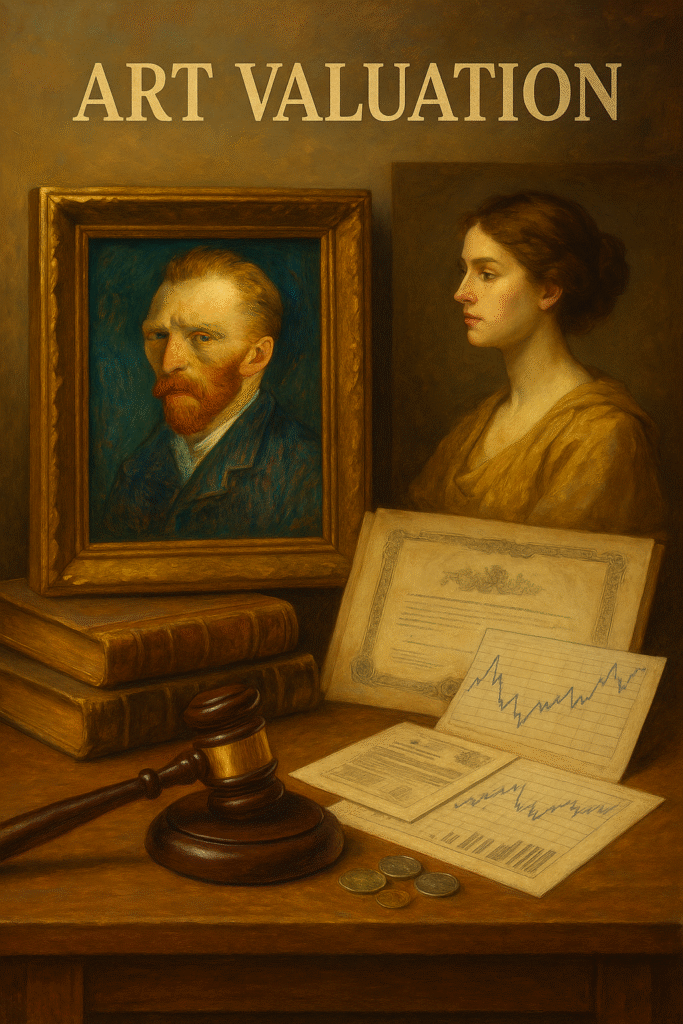Art valuation is determining a painting’s worth based on factors like artist reputation, provenance, market demand, and cultural significance. Understanding these components is crucial for collectors and investors aiming to make informed decisions in the complex art market landscape.
Understanding Art Valuation: Key Factors
What Determines the Value of a Painting?
1. Artist Reputation: Renowned artists like Van Gogh often command higher prices due to their historical and cultural impact.
2. Provenance: A well-documented history of ownership can authenticate and boost a painting’s desirability.
3. Market Demand: Trends vary, with contemporary art occasionally seeing surges linked to high-profile events.
4. Cultural Significance: Art that addresses societal themes often holds greater value.
Quality and Condition: Critical Appraisal Elements
The condition of a painting dramatically impacts its value. According to the American Society of Appraisers, regular assessments ensure that collectors invest wisely, considering both aesthetic and structural integrity.
Investing in Art: Why and How?
Why Consider Art as an Investment?
Art investment combines passion with financial savvy:
* Tangible Asset: Art offers aesthetic satisfaction unlike stocks.
* Potential Appreciation: Art’s worth can soar over time, offering significant returns.
* Cultural Contribution: Collecting art supports cultural preservation and growth.
How to Value a Painting: A Step-by-Step Guide
1. Research: Utilize galleries, art fairs, and auction houses for market insights.
2. Consult Experts: Engage with appraisers and art historians.
3. Analyze Trends: Follow sources like the Institute of Fine Arts at NYU for trends and valuation guides.
The Digital Art Realm: NFTs and Beyond
Impact of NFT Art Sales
NFTs have revolutionized art valuation:
* New Avenues: They provide unique opportunities for artists and investors.
* Valuation Challenge: Digital art requires a rethink of traditional appraisal models.
Art Market Trends
Digital platforms and social media harness contemporary art’s visibility and value. Adapting to these changes is vital for staying competitive in the art market.
Debunking Common Art Investment Myths
Addressing Misconceptions
* Not Just for the Wealthy: The art market offers entry points for all budgets.
* Fluctuating Values: Art can appreciate but is still subject to market dynamics.
* Beyond Aesthetics: A piece’s narrative enhances its worth significantly.
Your Art Investment Journey: Next Steps
Art investment is not merely about financial gain; it’s a journey into cultural exploration and personal enrichment. Consider diving into innovative areas, like AI-generated art, to keep pace with emerging trends and technologies.
Final Insights: Seize the Art Market
Armed with this comprehensive guide, your next move in art investment is promising. Explore further into topics like understanding art as an investment to propel your knowledge and potentially lucrative ventures in this captivating field.
FAQs
* How do I start investing in art?
Begin by educating yourself with resources and consulting professionals like appraisers.
* What’s the role of NFTs in art valuation?
NFTs have introduced a novel paradigm, affecting how digital art is assessed and traded.
* Can art be a stable investment?
Like all investments, art’s value can fluctuate, but it offers unique benefits like cultural enrichment.


